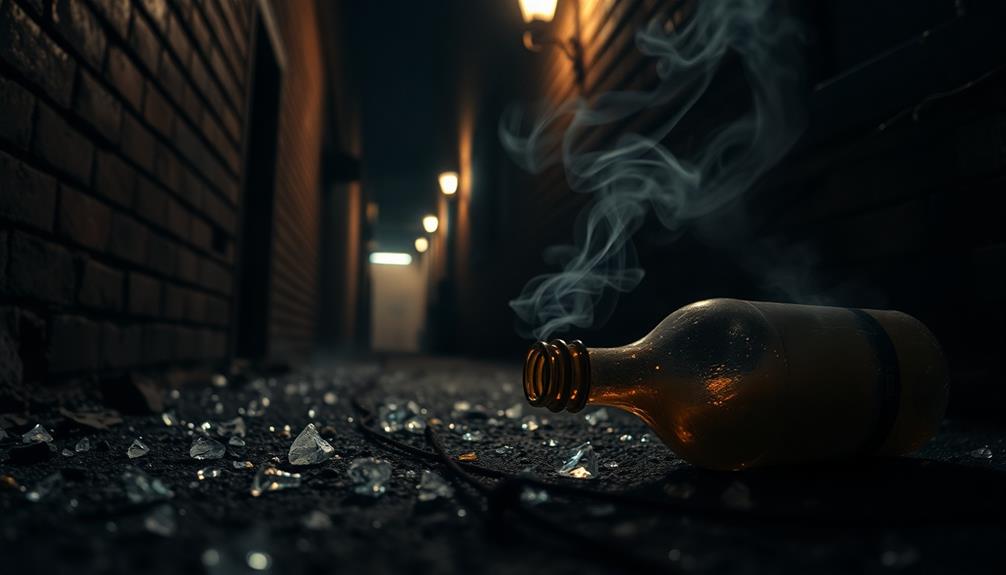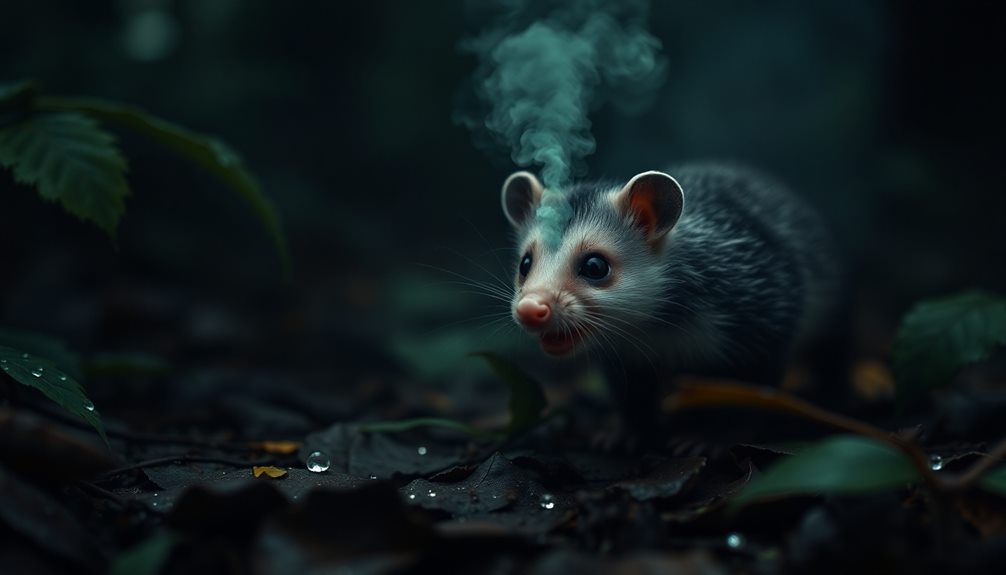Methamphetamine can smell really strong and unpleasant. You might notice odors like ammonia, vinegar, or even something similar to cat urine. If it's being smoked, it has a lighter, sweeter scent, kind of like burning plastic. Production can create even more intense smells, like rotten eggs. Recognizing these odors is super important for your safety and health. If you're in an area where you smell these things, it could mean a meth lab is nearby. Being aware of these scents helps you understand the risks around meth. Keep exploring to learn more about how to stay safe!
Key Takeaways
- Methamphetamine production emits strong chemical odors resembling ammonia, vinegar, and cat urine.
- Smoked meth has a lighter, sweeter scent similar to burning plastic.
- Odors from meth production can also smell like burning plastic or rotten eggs.
- Prolonged exposure to these smells can pose health risks, including respiratory issues.
- Recognizing these distinct smells is crucial for identifying nearby meth labs or drug use.
Introduction
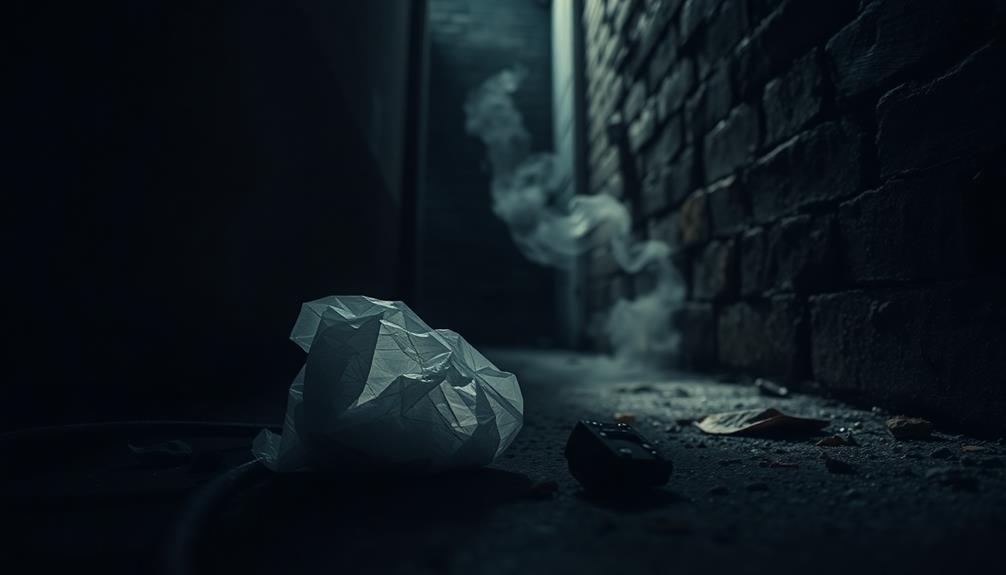
When you encounter a strong, unpleasant chemical smell, it could be a warning sign of methamphetamine production or use. Meth, a highly addictive drug, often creates specific odors during its production. These smells can be quite alarming, resembling ammonia, vinegar, or even cat urine.
When someone smokes meth, the scent might change to a lighter, sweet smell. However, when it's being made, you might notice odors similar to burning plastic or rotten eggs.
If you're near a meth lab, you'll likely experience a mix of pungent smells from dangerous chemicals like acetone, sulfuric acid, and hydrochloric acid. Recognizing these odors is crucial because they can indicate potential substance use or the presence of a meth lab in your area.
Even though crystal meth doesn't usually have a strong odor, the smells during its production and use can be quite pronounced. Understanding these signs can help you stay aware of your surroundings and protect yourself from the dangers associated with meth addiction.
Always trust your instincts—if something smells off, it's better to investigate further or seek help. Stay informed and stay safe!
Description of the Smell
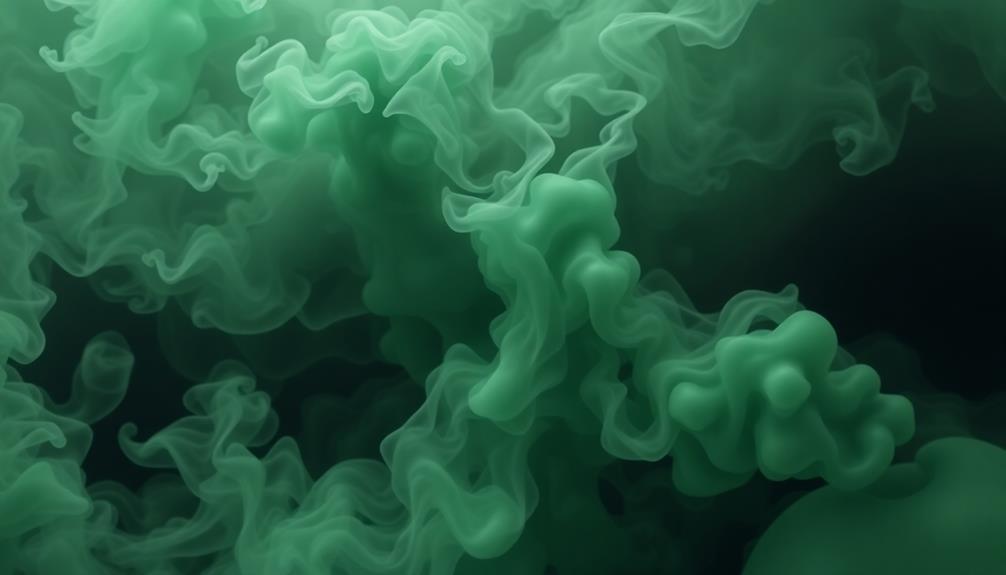
Have you ever noticed a strange, chemical smell that makes you feel uneasy? That could be a meth smell, often linked to methamphetamine.
When producing meth, the strong smell can resemble ammonia, vinegar, or even cat urine. It's a distinct smell that can be pretty overwhelming, especially if you're near a meth lab.
If someone is smoking meth, you might notice a lighter, sweeter smell, like burning plastic or a faintly sweet chemical scent.
However, the real warning signs come from the production process. The chemical reactions involved can create pungent odors that might remind you of rotten eggs or strong cleaning products.
When you encounter these smells, it's essential to pay attention. Noting these chemical odors can be crucial for understanding the risks associated with meth.
If you suspect someone is involved in addiction treatment or dealing with meth, recognizing these smells could help you identify a problem early.
Source and Composition
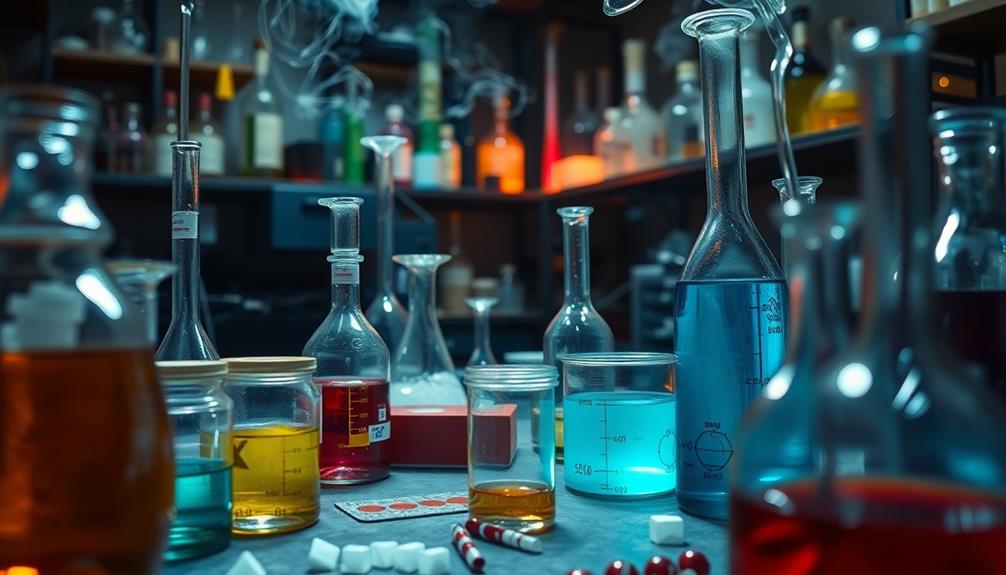
Methamphetamine's source and composition are critical to understanding its production and the resulting odors. You should know that meth is primarily made from pseudoephedrine or ephedrine, which are found in over-the-counter medications.
During meth production, various chemicals, like ammonia, lithium, and solvents, are combined, leading to the strong odors associated with it.
These volatile chemicals often release distinct smells that can remind you of common household cleaning products, vinegar, or even burnt plastic. If someone smokes meth, it might give off a lighter, sweet smell.
However, the production process creates pungent odors that can resemble rotten eggs or cat urine.
The chemical composition of meth plays a big role in these smells. Depending on the purity and form of the drug, some users may notice little to no smell at all.
Typical Scenarios or Environments
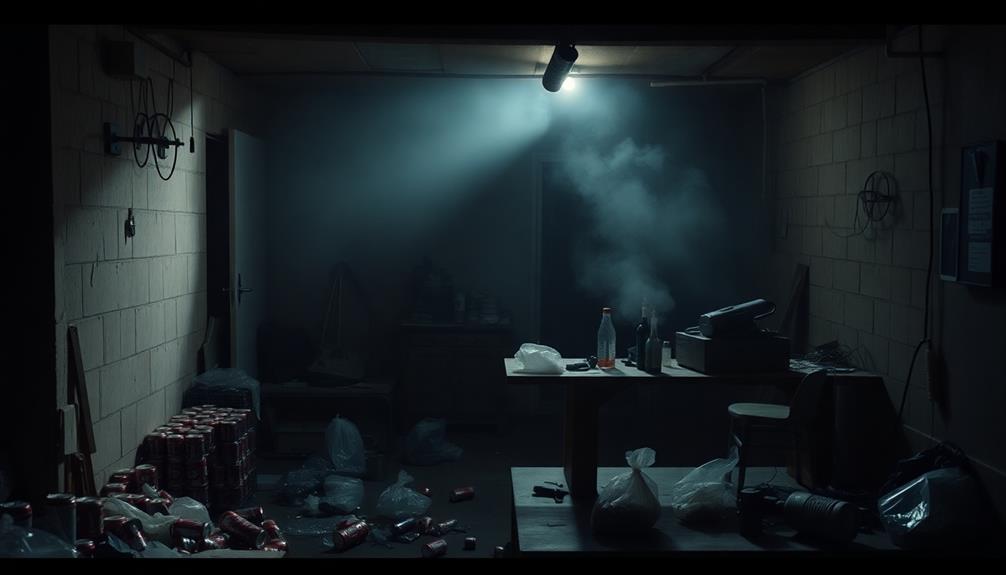
While living near a meth production site, you might notice an overwhelming presence of strong chemical odors that can disrupt your daily life. These meth smells can often resemble ammonia, vinegar, or even cat urine.
In a meth lab, the odors can get really strong, with scents similar to burning plastic or rotten eggs due to the toxic substances used in the production process.
If you've ever come across unusual smells, it could be a sign of a meth lab nearby. Smoked meth tends to have a lighter, almost sweet smell, but the production of meth generates much more pungent chemical odors that can seep into your environment.
It's important to pay attention to your surroundings. Residents often report health concerns associated with these strong odors, making it crucial to act quickly if you suspect a meth lab.
Look for signs of meth, like dead patches in lawns or an accumulation of chemical containers. If you notice these indicators, you should report your findings to the authorities.
Staying informed can help protect you and your community from the dangers linked to meth production.
Emotional or Cultural Associations
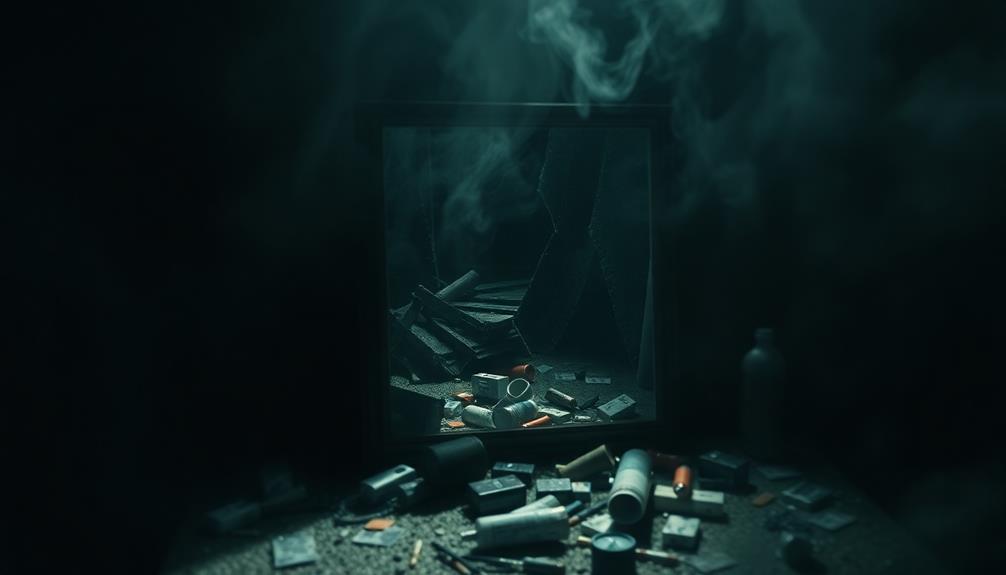
Experiencing the distinct odor of methamphetamine can trigger a wave of unease and fear within communities grappling with drug-related issues.
The smell of smoked meth, often compared to burning plastic or cat urine, stirs emotional and cultural associations that can stigmatize people struggling with addiction. Many folks connect this odor with crime and social decay, which shapes public perceptions and fuels stereotypes about users and their neighborhoods.
In heavily affected regions, the scent symbolizes a broader public health crisis that can prompt community-driven initiatives. These efforts aim to combat substance abuse and support recovery, showing that communities can rally together.
Awareness of meth's odor can spark important conversations about addiction, helping people understand its emotional impact on families and friends.
Health or Safety Considerations

The strong chemical odors associated with methamphetamine production can pose serious health and safety risks to nearby residents. If you smell something strange, like ammonia, vinegar, or burnt plastic, it might be a sign of a meth lab nearby. Prolonged exposure to these chemical odors can lead to respiratory issues, headaches, and nausea.
It's important to pay attention to how you feel and take action if you notice these smells.
Chemical residues from meth production can stick around for a long time, creating health risks, especially for children and pets who are more vulnerable. If you suspect a meth lab is nearby, immediate evacuation is recommended to reduce health hazards and keep everyone safe.
Don't hesitate to report any unusual chemical odors to law enforcement. This step is crucial for public safety, as these environments can lead to dangerous situations, including potential explosions.
Final Thoughts

Recognizing the distinct smells associated with methamphetamine is vital for your safety and the safety of those around you. Methamphetamine often has a strong chemical odor, which can remind you of cat urine, rotten eggs, or vinegar, especially during its production.
When smoked, the smell may change to something lighter and sweet, but it can also produce acrid odors like burning plastic or strong cleaning agents.
These distinct odors are important clues that can help you identify drug use or the presence of a meth lab nearby. Being aware of these smells can be crucial for early detection of substance misuse, allowing you to take necessary precautions.
Frequently Asked Questions
Can Methamphetamine Smell Vary by Region or Setting?
Yes, methamphetamine's smell can vary by region or setting. Different production methods and local ingredients influence the odor. You might notice a stronger scent in areas with more significant meth activity or specific manufacturing techniques.
What Household Products Can Mask Methamphetamine Odor?
To mask methamphetamine odor, you can use strong household products like vinegar, ammonia, or air fresheners. However, relying on these isn't a solution to the underlying issue; addressing the source is crucial for safety.
How Long Does Methamphetamine Odor Linger in a Space?
The odor from methamphetamine can linger for days or even weeks, depending on factors like ventilation and the materials in the space. You might need thorough cleaning or professional help to fully eliminate it.
Are There Specific Scents Associated With Meth Cooking?
When you think about meth cooking, you might notice strong chemical scents. It often smells like ammonia, cat urine, or a mix of burnt plastic and ether, which can be quite overwhelming and distinct. These odors are often pervasive and can cling to surfaces long after the actual cooking process has ended. If you’re wondering “what does meth smell like,” this combination of harsh, acrid fumes is one of the most recognizable telltale signs. People who have been near meth production sites may find the smell lingering in clothes or furniture, making it hard to mask or ignore.
Can Pets Detect the Smell of Methamphetamine?
Yes, pets can detect the smell of methamphetamine. Their acute sense of smell allows them to sense various substances, including drugs. If you're concerned, it's best to keep your pets away from suspicious areas.
